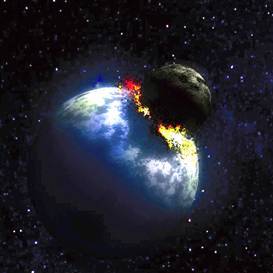New nuclear explosion theory for Moon’s creation
 Some scientists have worked out a new theory about the Moon's creation which says that the satellite may have been formed because of a nuclear explosion.
Some scientists have worked out a new theory about the Moon's creation which says that the satellite may have been formed because of a nuclear explosion.
Rob de Meijer of the University of the Western Cape in South Africa and Wim van Westrenem of VU University Amsterdam believe the explosion theory caused the creation of moon.
The theory believes that an explosion occurred on the edge of Earth's core and it pushed red-hot, liquid rock into space which orbited Earth and gradually became its lone satellite. In a report published in New Scientist Marvin Herndon pointed out that such a reactor could not exist at the core-mantle boundary.
Richard Gott of Princeton University and Planetary physicist David Stevenson of Caltech are both doubtful of the new theory. While the later even said that the 'idea is not physically sensible.'
Richard Gott said that if the theory was accurate then similarly Venus would have formed a moon as it has similar mass and composition to the Earth.
IF the theory is accepted scientifically it will replace the earlier theory known as the "giant impact theory." This theory suggests that a planet called Theia slammed into the early proto-Earth about 62 million years after the solar system's birth. The iron and nickel core of both the planets combined to form the Earth while lighter silicate mantle and crust was ejected into space to form the moon.
Meijer and van Westrenem came out with the theory mainly to explain the similarities between the composition of the moon and the Earth's mantle while moon should have been different with the material from the impactor.
Gott said the reason for similar composition is that the impactor was formed at the same distance from the sun as the Earth.